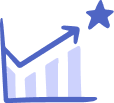Residential
Treatment Programs
What are they and are
they right for my child?


PROGRAM FACTS

What is the typical duration?
The length will vary but you should expect a 6-9 month stay at a minimum. Many children will stay a full year and some up to two years.

Who is a good fit?
Residential treatment is typically a next step following wilderness although it is possible to skip wilderness and go straight to residential treatment.

Do they work?
As with wilderness programs, there is debate about the effectiveness of residential treatment programs. In our experience, the right program and therapy can be immensely helpful by providing a new environment, away from potential stressors at home, and in a similar group of struggling teenagers.
Q & A
Residential Treatment Programs
All programs vary.. Some facilities have a strong emphasis on art, animals, equine therapy, outdoor activities, and other experiences. Others are more like a highly structured boarding school with emphasis on therapy and recovery of the child as an individual and in a group with other teens struggling with their own issues. Some programs are locked facilities, and some are not – based on the different needs of the population they are serving. Different RTCs offer different therapeutic modalities as well. The more variety in therapeutic modalities offered the better, as they can individualize the program to meet your child’s needs. RTCs are structured with multiple therapies a day, meal times, activities, and educational time. There is more emphasis on therapy and stabilization than academics, although they usually provide credit recovery opportunities. We suggest exploring as much as you can about the daily schedule and structure of any RTC you are interested in sending your child to. Ask specific curriculum and schedule-focused questions about the program.
If your teen is willing to go to residential treatment or is coming from a wilderness program, you can arrange transport and accompany your child. Even so, it is sometimes easier to use a service that does this. There is no right or wrong way and every family situation is unique. Many families like to take their teen directly and have the opportunity to see the facilities and program location in person and meet with the staff. That said, it is emotionally difficult so don’t be surprised if you find yourself crying in the parking lot after saying goodbye. We have all been there.
If your teen is not willing to go, as with wilderness programs, there are “transport” programs that will come in the middle of the night to take your child from bed. The teens call it getting “gooned”. (See the description above from wilderness programs.) The people who run the transport programs are experienced and will get your child through the airport and to the program safely. Your child will likely be terrified and really angry at you for some time. But many of them will thank you later and sometimes it is the only way to remove aa child from their current environment who is not otherwise willing to accept that they need immersive therapy .
Most children coming from wilderness find residential treatment to be an easier transition – more like a traditional boarding school, albeit one with lots of supervision and therapy – but much less rustic, better food and a bed to sleep in rather than a tent.
All residential treatment programs will expect significant family involvement. As with wilderness therapy, the concept is that while the child needs individual focus and treatment, the whole family, but especially the parents, are a critical part of the healing process. Most wilderness programs will start off with a period of limited to no contact to give your child a chance to acclimate to the program and give them a chance to move through their initial grief and anger before they first talk to you (if your child was sent away unwillingly, be prepared for them to still be very upset and angry when they do talk to you – it is SO HARD – but it is also very normal!). The different programs have varied structure and timing for family incorporation, but it frequently moves from a period of no contact while each teenager works with program therapists, followed by guided letter writing exchanges or other narrative activities, then on to individual and family therapy, and later to in-person facilitated parent visits. You should absolutely expect to go visit and spend several days with your child as part of the therapy process.
If you decide to send your child to a residential treatment program, we encourage you to ask what kinds and level of engagement is expected of the family. The more, the better.
Generally, yes, there are opportunities to visit your child. Some programs require that initial settling-in time with no contact while they assess and see what is clinically recommended. This is especially true if your child is at the program for multiple months as there will be opportunities to visit later.
As with wilderness programs, Residential Treatment is expensive and, unfortunately, at least to date, most insurance companies will cover only a small amount of the cost – usually only specific periods that can be attributed to therapy with a professional. The costs vary, but you can expect to pay somewhere between $9,000-$12,000 per month – often around $500 a day. These costs cover everything from food and supplies (you pack only your child and clothing), to intensive individual and group therapy. This cost does not include transportation to and from home if, and when, they allow home visits or your own travel to the program. Putting your child in Residential Treatment is a significant financial commitment.
Because residential treatment centers are for more high risk youth, there are more insurance options compared to therapeutic boarding schools. Residential treatment centers require a mental health diagnosis if insurance is going to cover any of the tuition.
As with wilderness, deciding what comes next after residential treatment is made in tandem with the family and treatment team. Many teens are ready to come home after residential treatment. They will have had increasing periods of time where you could visit with them at their program and opportunities to come home for breaks. Some families and children will decide to start a new school or repeat an academic year to give themselves a fresh start. Others may not yet be ready to be living at home or back to their previous school setting. They may decide to stay longer at the same RTC or transition to another that better fits their needs.
Residential Treatment is not right for every child. Some kids are a better fit for a therapeutic boarding school (a level down from residential treatment and more emphasis on academics – think a boarding school with built-in therapy and a population of children struggling with mild to moderate social/emotional issues.) And, of course, many children can work through their issues at home with the help of out-patient services. This could look like therapy, psychiatry, mental health services at school, increased family support, supporting your child in finding a passion or hobby, moving, figuring out new ways to communicate and express challenges within the family, and other tools.


